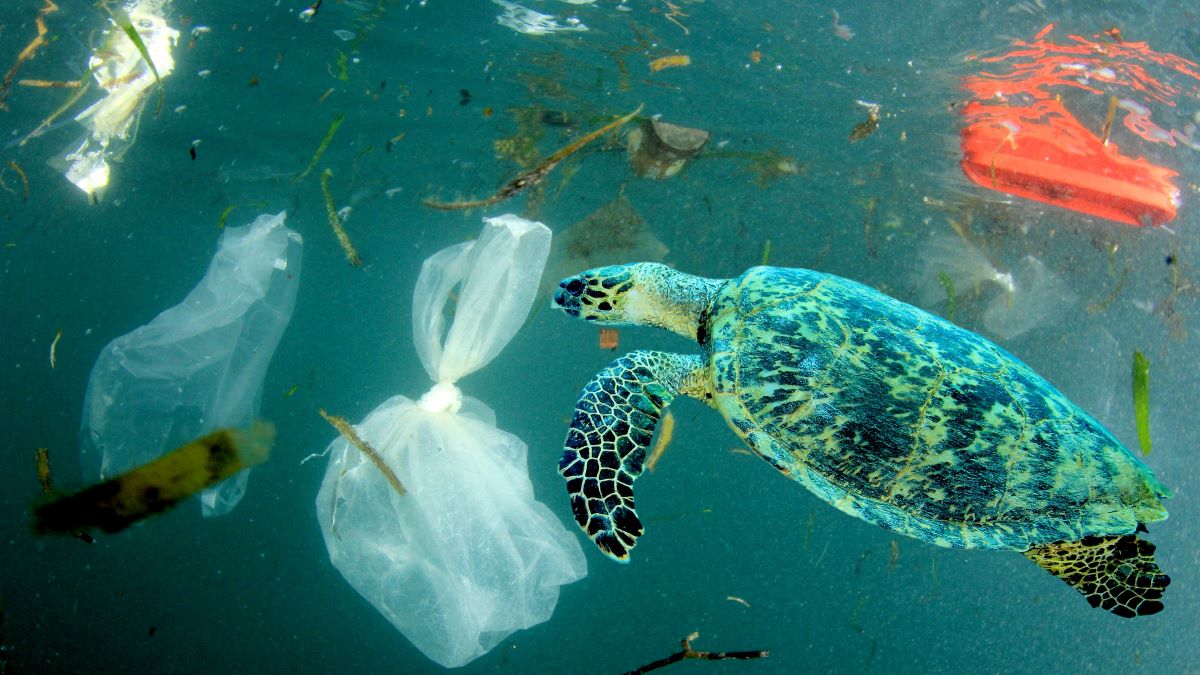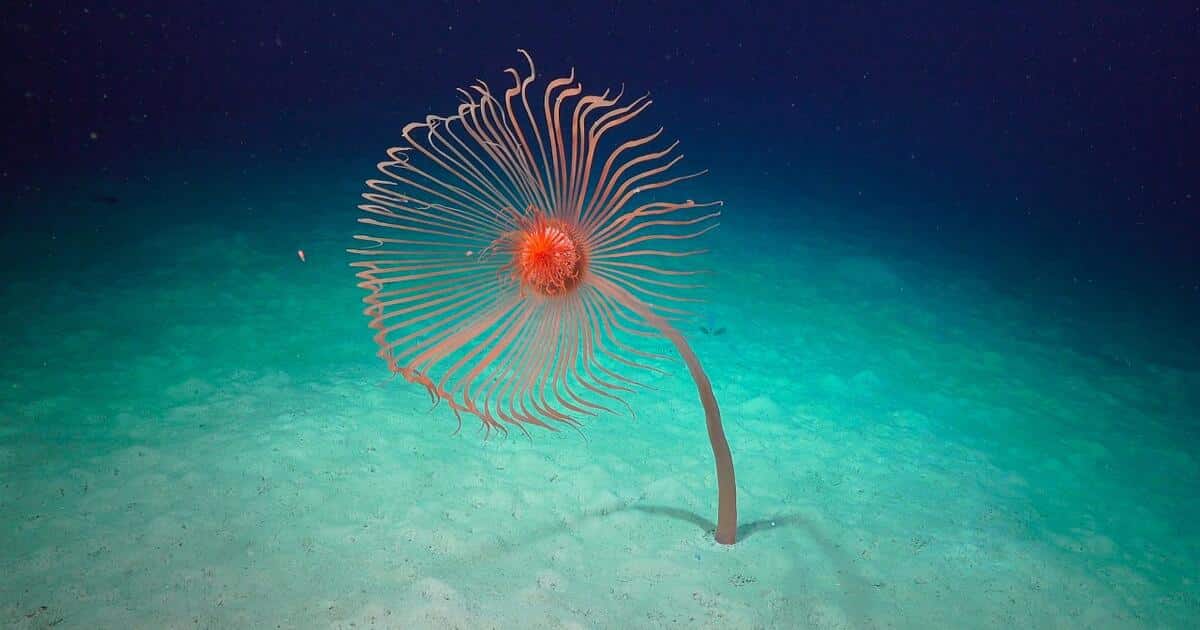Anúncios
Unfathomable mysteries lie beneath the waves, spanning the depths of the earth’s oceans. Stepping beyond the shore, into a world that is alien and full of surprises, a journey of discovery awaits. This journey, delving deep into the blue, reveals a fascinating collection of ocean facts that are sure to stun and mesmerize. An abyss full of wonders, where each fact is more unbelievable than the last, the deep sea is a testament to the magic and mystery of our planet.
Plunging into the Depth: The Unseen World Below the Surface
The ocean is a vast, mysterious world teeming with an incredible diversity of life and phenomena. Despite covering about 71% of the Earth’s surface, an astounding 80% of it remains unexplored and unmapped. Let’s dive in to explore some unbelievable facts about this underwater realm.
Anúncios
Unimaginable Scale
To begin, it’s important to understand the sheer scale of the ocean. Its average depth is about 2.3 miles (3.7 kilometers), with the deepest point, the Mariana Trench, plunging to a staggering 7 miles (11 kilometers) below the surface. This immense depth holds more than just water. It contains an estimated 20 million tons of gold. Alas, this precious metal is so diluted that it’s uneconomical to extract.
World of Extremes
The ocean is a world of extremes. It has the longest mountain range, the Mid-Ocean Ridge, stretching over 40,000 miles (64,374 kilometers) across. The sea floor also hosts the world’s largest waterfall, the Denmark Strait Cataract, where water falls a whopping 11,500 feet (3,505 meters)—almost twice the height of Mount Everest.
Anúncios
Harboring Incredible Biodiversity
The ocean is home to a vast array of species, many of which are yet to be discovered. Scientists estimate that up to 2 million marine species exist, and only a fraction have been identified.
Rich in Life, Yet Poor in Nutrients
Ironically, the open ocean, despite being so full of life, is remarkably low in nutrients. This is because sunlight, necessary for photosynthesis, only penetrates the upper layers of the water, making the deep ocean a “biological desert.”
Mysterious Sea Creatures
Some of the world’s most bizarre and fascinating creatures inhabit the ocean depths. For example, the anglerfish uses a bioluminescent lure to attract prey in the pitch-black deep sea. The gulper eel, with its giant mouth, can swallow prey larger than itself.
A Crucial Component of Our Planet
Ocean Currents and Climate Regulation
Ocean currents regulate the Earth’s climate by distributing heat around the planet. The Gulf Stream, for example, carries warm water from the Gulf of Mexico to Western Europe, keeping it warmer than other regions at the same latitude.
The Lungs of Our Planet
Phytoplankton, tiny plant-like organisms in the ocean, produce half of the world’s oxygen through photosynthesis. They also absorb large amounts of carbon dioxide, helping to mitigate climate change.
The Ocean’s Unseen Dangers
Underwater Earthquakes and Tsunamis
Underwater earthquakes can generate tsunamis, immense sea waves that can cause catastrophic damage when they reach land. The most devastating tsunami on record, triggered by an earthquake off the coast of Sumatra in 2004, killed over 230,000 people in 14 countries.
Sea Level Rise
Due to global warming, the ocean is heating up and expanding, resulting in rising sea levels. If current trends continue, coastal cities and island nations could face severe flooding in the future.
Exploring and Protecting the Ocean
Marine Exploration Technology
Technological advances, such as autonomous underwater vehicles (AUVs), are opening up new possibilities for ocean exploration. These devices can descend to extreme depths and capture high-resolution images and data.

Conservation Efforts
Many organizations are working hard to conserve the ocean and its biodiversity. This includes establishing marine protected areas, promoting sustainable fishing practices, and raising awareness about ocean pollution.
- The World Wildlife Fund (WWF) focuses on preserving critical marine areas.
- The Marine Stewardship Council promotes sustainable fishing through its certification program.
- The Ocean Cleanup is developing advanced technologies to rid the world’s oceans of plastic.
The vastness of the ocean presents us with both unimaginable wonders and daunting challenges. But as we continue to explore and understand this incredible world, we become better equipped to protect and cherish it for generations to come.
Human History and the Ocean
The relationship between humanity and the ocean stretches back to our earliest origins. For thousands of years, oceans have played a vital role in shaping civilizations, enabling trade, exploration, and cultural exchange. Ancient maritime cultures such as the Polynesians, Phoenicians, and Vikings navigated vast waters with remarkable skill, often relying on stars, wind patterns, and natural cues from the ocean itself.

Maritime trade routes led to the rise of powerful economies and empires. From the Silk Road’s marine branches to the Age of Exploration in the 15th century, oceans connected continents, peoples, and ideas. This intricate network of seaways fostered global development, but also led to colonization, exploitation, and environmental strain.
The Ocean’s Role in Food Security
Oceans are not only highways for ships but also a critical source of food. Over 3 billion people depend on seafood as a primary protein source. Commercial fisheries, small-scale fishing communities, and aquaculture industries provide both livelihoods and nutrition to millions worldwide. Yet, overfishing and unsustainable practices have put immense pressure on fish populations and marine ecosystems.
Illegal, unreported, and unregulated (IUU) fishing is a major threat, undermining conservation efforts and economic stability. Combatting IUU requires international cooperation, sustainable catch quotas, traceability, and consumer awareness. Initiatives like Marine Stewardship Council certifications and sustainable seafood guides empower consumers to make eco-conscious choices.
The Deep Ocean: Frontier of Discovery
While surface and coastal waters have been explored for centuries, the deep ocean remains one of the least understood places on Earth. The hadal zone—depths exceeding 6,000 meters—is home to otherworldly life forms adapted to crushing pressures, total darkness, and near-freezing temperatures. Exploring these zones offers insight into evolution, geology, and even potential cures for diseases.
In 2020, the Deep Sea Exploration Project mapped thousands of square kilometers of the ocean floor, uncovering new hydrothermal vents, cold seeps, and bioluminescent organisms. These discoveries not only expand our knowledge but also remind us how much remains unknown beneath the waves.
:max_bytes(150000):strip_icc()/deepsee-deep-diving-submersible-in-dark-with-lights-on--cocos-island--costa-rica---pacific-ocean-128123437-5ac133500e23d900367aa193.jpg)
Ocean Pollution: A Global Crisis
Pollution remains one of the gravest threats to ocean health. Plastic debris, toxic runoff, oil spills, and chemical contaminants disrupt marine ecosystems, threaten wildlife, and contaminate food chains. Every year, over 8 million tons of plastic enter the ocean—much of it from land-based sources.
Microplastics have been found in fish, seabirds, and even human bloodstreams. Tackling ocean pollution requires systemic change: banning single-use plastics, improving waste management, cleaning polluted waterways, and innovating biodegradable alternatives. Education and grassroots movements, such as coastal cleanups, play a pivotal role in creating a cleaner future.
Oceanic Climate Feedback Loops
The ocean not only regulates the climate—it also reacts to it. As global temperatures rise, the ocean absorbs excess heat and carbon dioxide. This has caused coral bleaching, acidification, and disrupted migration patterns. Melting polar ice contributes to sea-level rise, while changing currents can destabilize weather systems.
One of the most concerning feedback loops involves methane hydrates trapped under the seafloor. As ocean temperatures warm, these gases may be released, amplifying the greenhouse effect. Understanding and mitigating these processes is crucial to maintaining planetary balance.
The Spiritual and Cultural Significance of Oceans
Beyond their scientific importance, oceans have long held spiritual, mythological, and cultural meaning. From Poseidon and Tangaroa to Yemanjá and Sedna, marine deities appear across belief systems. Oceans symbolize mystery, power, fertility, and the unknown. For coastal and island communities, the sea is a source of identity and connection to ancestors.
Modern expressions of ocean reverence appear in literature, music, and visual arts. From Jules Verne’s “Twenty Thousand Leagues Under the Sea” to contemporary marine photography, the sea inspires awe and creativity across cultures and generations.
Emerging Ocean-Based Solutions
Innovations in ocean science and sustainability are paving the way for solutions that benefit both people and the planet. Blue carbon ecosystems—mangroves, seagrasses, and salt marshes—store vast amounts of carbon and protect coastlines. Restoring and preserving these habitats can help combat climate change.
Other breakthroughs include:
- Algae-based biofuels that offer renewable energy without competing with food crops.
- Ocean farming of seaweed and shellfish, which require no freshwater or fertilizers.
- Floating solar farms that generate clean electricity with minimal land use.
- Deep-sea mining regulations being developed to balance resource extraction with conservation.
Youth and Ocean Activism
A new generation of ocean advocates is leading the charge for change. From youth-led movements like Fridays for Future to organizations such as Sustainable Ocean Alliance, young people are raising awareness, influencing policy, and engaging in community-based action. Their creativity and passion are transforming ocean conservation into a global cause.
Educational platforms, citizen science apps, and social media campaigns are empowering more individuals to take part. Youth voices are now heard at UN summits, marine science panels, and in the streets demanding protection for our blue planet.
Conclusion
In conclusion, the mysteries and wonders of the deep ocean never fail to leave us in awe. From the astonishing variety of marine life to the fascinating physical phenomena, the deep sea truly holds a world of unimaginable facts. We learned that the ocean is home to the largest living structure on earth, the Great Barrier Reef, and holds about 97% of the earth’s water. Moreover, the creatures inhabiting the deep-sea regions adapt to the extreme conditions in remarkable ways, showcasing the resilience and versatility of life.
The importance of the ocean cannot be overstated, as it plays a crucial role in maintaining the earth’s climate and supporting a significant portion of its biodiversity. However, human activities pose a substantial threat to these underwater wonders. It is vital, now more than ever, that we take collective action to protect our oceans and the life they nurture.
As we continue to explore the depth of the seas, we can expect to uncover more fascinating facts about this underwater world. The ocean’s grandeur truly exemplifies the quote, “truth is stranger than fiction.” Remember, each time you gaze at the vast expanse of water, there’s a whole different universe underneath, waiting to be discovered. 🌊🐋🐠🌍🔬
m the simplest organisms to the most complex marine creatures, populate the underwater realm. Unseen by human eyes, these captivating species have adapted to survive in some of the harshest conditions on earth. Secrets of their existence, often stranger than fiction, will leave you astounded and craving for more.
Furthermore, the ocean’s expanse holds clues to our past and keys to our future. It’s a timeless sentinel, bearing witness to the evolution of life and the shifting dynamics of our planet’s climate. Uncovering these stories locked in the ocean’s depths can help us understand the world we live in and our place within it.
But the ocean’s wonders don’t end there. From powerful tsunamis to silent tides, the ocean’s dynamic nature is a constant source of awe. The science behind these phenomena not only provides a deeper understanding of our planet’s intricate systems but also reveals the immense power that the deep sea holds.
Embark on this immersive exploration into the captivating world beneath the waves. Each paragraph is an invitation to dive deeper and marvel at the stunning revelations of the ocean’s wonders. Get ready to dive into a world of unbelievable ocean facts that will leave you in awe! 🌊🐋🐠🌍🔬
Plunging into the Depth: The Unseen World Below the Surface
The ocean is a vast, mysterious world teeming with an incredible diversity of life and phenomena. Despite covering about 71% of the Earth’s surface, an astounding 80% of it remains unexplored and unmapped. Let’s dive in to explore some unbelievable facts about this underwater realm.
Unimaginable Scale
To begin, it’s important to understand the sheer scale of the ocean. Its average depth is about 2.3 miles (3.7 kilometers), with the deepest point, the Mariana Trench, plunging to a staggering 7 miles (11 kilometers) below the surface. This immense depth holds more than just water. It contains an estimated 20 million tons of gold. Alas, this precious metal is so diluted that it’s uneconomical to extract.
World of Extremes
The ocean is a world of extremes. It has the longest mountain range, the Mid-Ocean Ridge, stretching over 40,000 miles (64,374 kilometers) across. The sea floor also hosts the world’s largest waterfall, the Denmark Strait Cataract, where water falls a whopping 11,500 feet (3,505 meters) – almost twice the height of Mount Everest.
Harboring Incredible Biodiversity
The ocean is home to a vast array of species, many of which are yet to be discovered. Scientists estimate that up to 2 million marine species exist, and only a fraction have been identified.
Rich in Life, Yet Poor in Nutrients
Ironically, the open ocean, despite being so full of life, is remarkably low in nutrients. This is because sunlight, necessary for photosynthesis, only penetrates the upper layers of the water, making the deep ocean a “biological desert.”
Mysterious Sea Creatures
Some of the world’s most bizarre and fascinating creatures inhabit the ocean depths. For example, the anglerfish uses a bioluminescent lure to attract prey in the pitch-black deep sea. The gulper eel, with its giant mouth, can swallow prey larger than itself.
A Crucial Component of Our Planet
Not only is the ocean an incredible wonderland, but it also plays a crucial role in our planet’s health.
Ocean Currents and Climate Regulation
Ocean currents regulate the Earth’s climate by distributing heat around the planet. The Gulf Stream, for example, carries warm water from the Gulf of Mexico to Western Europe, keeping it warmer than other regions at the same latitude.
The Lungs of Our Planet
Phytoplankton, tiny plant-like organisms in the ocean, produce half of the world’s oxygen through photosynthesis. They also absorb large amounts of carbon dioxide, helping to mitigate climate change.
The Ocean’s Unseen Dangers
Despite its beauty and allure, the ocean also holds numerous dangers. It’s a reservoir of powerful forces and destructive phenomena that can have far-reaching impacts.
Underwater Earthquakes and Tsunamis
Underwater earthquakes can generate tsunamis, immense sea waves that can cause catastrophic damage when they reach land. The most devastating tsunami on record, triggered by an earthquake off the coast of Sumatra in 2004, killed over 230,000 people in 14 countries.
Sea Level Rise
Due to global warming, the ocean is heating up and expanding, resulting in rising sea levels. If current trends continue, coastal cities and island nations could face severe flooding in the future.
Exploring and Protecting the Ocean
Given the ocean’s importance to our planet, it’s crucial to both explore and protect it.
Marine Exploration Technology
Technological advances, such as autonomous underwater vehicles (AUVs), are opening up new possibilities for ocean exploration. These devices can descend to extreme depths and capture high-resolution images and data.
Conservation Efforts
Many organizations are working hard to conserve the ocean and its biodiversity. This includes establishing marine protected areas, promoting sustainable fishing practices, and raising awareness about ocean pollution.
- The World Wildlife Fund (WWF) focuses on preserving critical marine areas.
- The Marine Stewardship Council promotes sustainable fishing through its certification program.
- The Ocean Cleanup is developing advanced technologies to rid the world’s oceans of plastic.
The vastness of the ocean presents us with both unimaginable wonders and daunting challenges. But as we continue to explore and understand this incredible world, we become better equipped to protect and cherish it for generations to come.
Conclusion
In conclusion, the mysteries and wonders of the deep ocean never fail to leave us in awe. From the astonishing variety of marine life to the fascinating physical phenomena, the deep sea truly holds a world of unimaginable facts. We learned that the ocean is home to the largest living structure on earth, the Great Barrier Reef, and holds about 97% of the earth’s water. Moreover, the creatures inhabiting the deep-sea regions adapt to the extreme conditions in remarkable ways, showcasing the resilience and versatility of life.
The importance of the ocean cannot be overstated, as it plays a crucial role in maintaining the earth’s climate and supporting a significant portion of its biodiversity. However, human activities pose a substantial threat to these underwater wonders. It is vital, now more than ever, that we take collective action to protect our oceans and the life they nurture.
As we continue to explore the depth of the seas, we can expect to uncover more fascinating facts about this underwater world. The ocean’s grandeur truly exemplifies the quote, “truth is stranger than fiction.” Remember, each time you gaze at the vast expanse of water, there’s a whole different universe underneath, waiting to be discovered.

